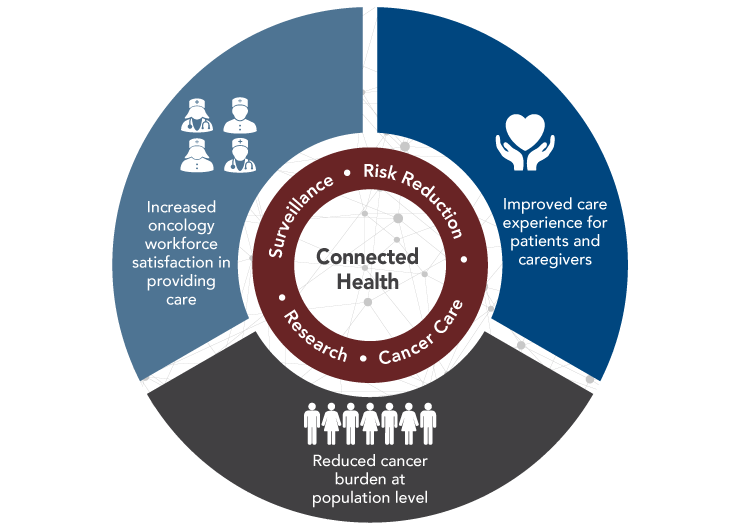
Image Credit - The President's Cancer Panel Report:
"Improving Cancer-Related Outcomes with Connected Health"
The FCC's Connect2Health Task Force (C2HFCC) and the National Cancer Institute (NCI) have joined forces to convene key stakeholders around a public-private partnership to help bridge the broadband health connectivity gap in Appalachia. This collaboration studies how increasing broadband access and adoption in rural areas can help improve outcomes and quality of life for cancer patients.
- About L.A.U.N.C.H.
- New! The Landscape of Connected Care Symptom Management in Rural America (Journal of Appalachian Health)
- Experiencing Cancer in Appalachian Kentucky - Preface (Journal of Appalachian Health)
- Experiencing Cancer in Appalachian Kentucky
- Barn-Raising on the Digital Frontier: The L.A.U.N.C.H. Collaborative (Journal of Appalachian Health)
- Senior Leadership Think Tank Summary
- Learn more about the LAUNCHPAD "blueprint" and platform at launchhealth.org.
L.A.U.N.C.H.
(Linking & Amplifying User-Centered Networks through Connected Health)
A Demonstration of Broadband-enabled Health for Rural Populations in Appalachia
As illustrated in the President’s Cancer Panel report, Improving Cancer-Related Outcomes with Connected Health, cross-sector collaboration among those in the healthcare, biomedical research, and technology fields is essential to the future of cancer care. Consistent with this blueprint, the L.A.U.N.C.H. project focuses on how broadband connectivity can be leveraged to improve symptom management for rural cancer patients, presenting a compelling case for greater deployment and adoption of broadband in rural areas.
The L.A.U.N.C.H. project focuses on areas that face the dual challenge of higher cancer mortality rates and lower levels of broadband access. The initial geographic focus is rural Kentucky. Current project stakeholders include the FCC’s Connect2Health Task Force, National Cancer Institute, the University of Kentucky Markey Cancer Center (a NCI-designated cancer center), the University of California, San Diego’s Design Lab, and Amgen.
According to the Centers for Disease Control and Prevention, Americans living in rural areas are still more likely to die of cancer than their counterparts in urban settings, which sets them apart from the many communities nationwide that have experienced a 20% decrease in cancer mortality over the past two decades. Initial analysis of the intersection between broadband data and cancer data shows that these rural “cancer hotspots” also face major gaps in broadband access and adoption, often putting promising connected care solutions far out of reach.
In Appalachia, the cancer picture is bleaker than in other rural parts of the country. Research from University of Virginia School of Medicine has shown that between 1969 and 2011, cancer incidence declined in every region of the country except rural Appalachia, and mortality rates soared. Kentucky's lung cancer numbers are particularly staggering. According to NCI, the lung cancer incidence per 100,000 people is 92.4, compared with 60.4 nationally. Mortality per 100,000: 68.8 — around 120 in the hardest-hit Appalachian counties — compared with 45 nationally.
This multi-year project looks at how broadband can be leveraged to improve symptom management for rural cancer patients, one of the priorities of the 2016 Blue Ribbon Panel, a group of scientific experts created to advise the National Cancer Advisory Board. This is the inaugural project under a Memorandum of Understanding between the FCC and the National Cancer Institute.
To learn more about how you can participate or join our mailing list, contact David Ahern at launch@fcc.gov.